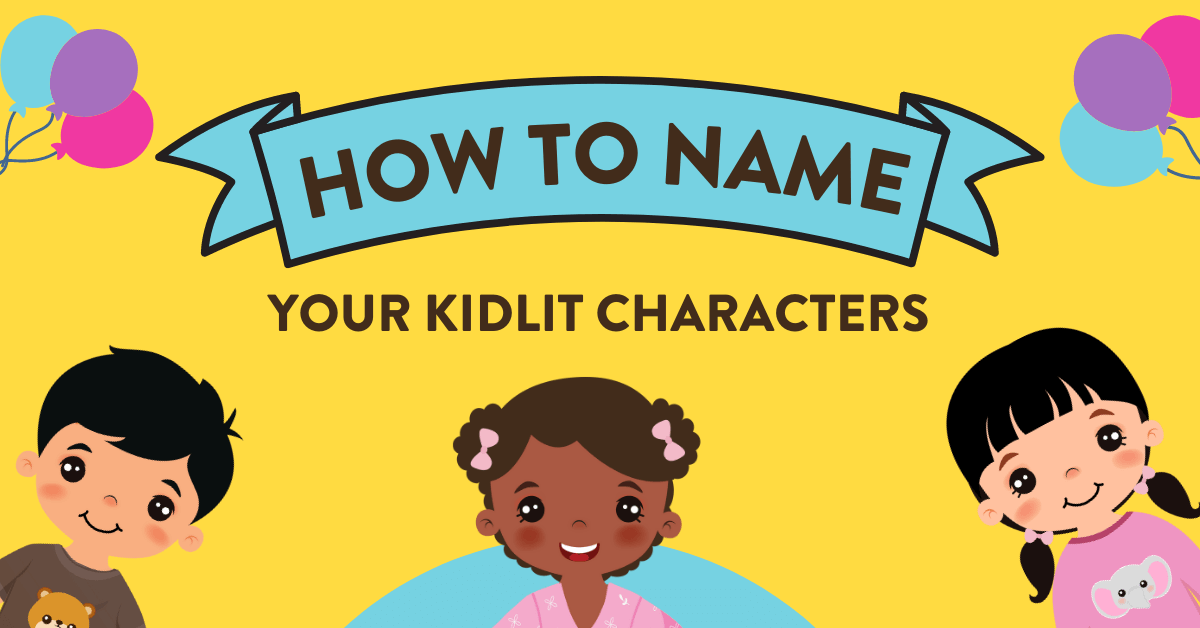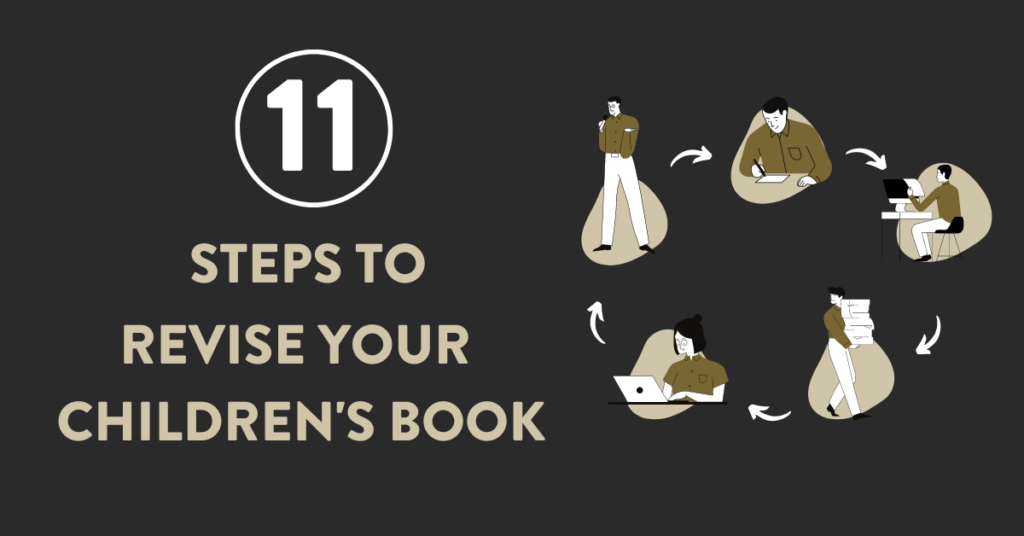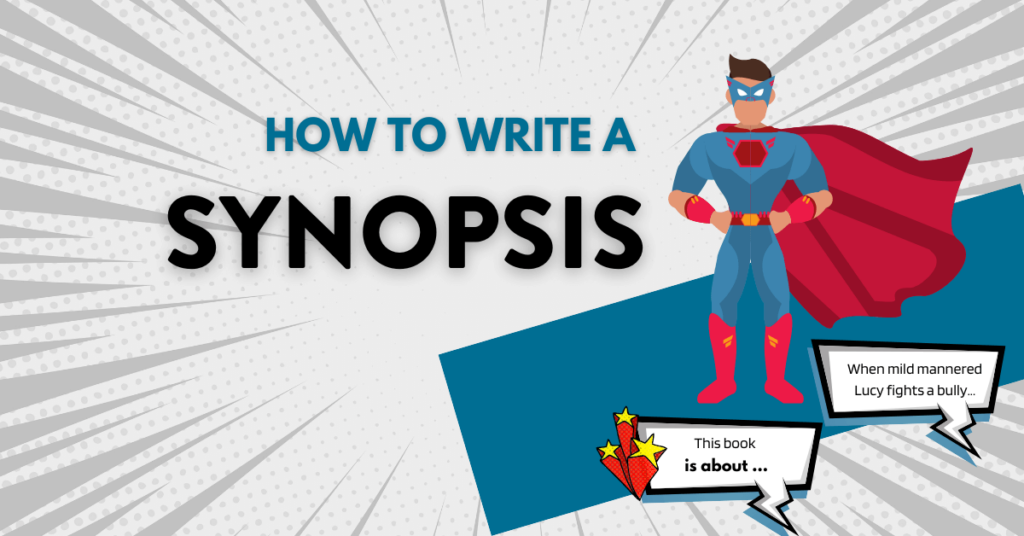
Naming a character, especially for a children’s book, isn’t just a matter of whimsy.
It’s an art and a science combined, a delicate dance that can ignite imagination or leave your story flat. This might sound like a tall order, but don’t worry. With the right approach, you can find the perfect name that resonates with your readers.
And if you’d like more help on your children’s book, check out my post, “How to Write a Children’s Book in 12 Steps.”
1. Why Character Names Matter
Names are more than just labels; they’re reflections of personality and culture. They give clues about the character’s traits and background.
You know what they say: “A rose by any other name would smell as sweet.” Well, not when it comes to naming characters! Get it right, and you’ve set your story on a solid foundation.
I’ve edited books with characters in them named:
- Zephyr
- Crimson
- Fable
Now, those might sound like odd names, but for two of the three, they were exactly the right names for these characters and for this book. The right character name depends entirely on context.
2. Tips for Naming Kidlit Characters
Many of my authors end up naming their characters after their daughter or son (or granddaughter or grandson). This makes sense because the book is a tribute to the child.
But if you’re naming it after someone you tutored, or someone not in your direct family, you could be inviting a lawsuit if you tell them you used their name. It’s best to only use real names when they’re in your family.
If you’re not naming a character after someone you know, here are some other ideas:
- Understand Your Character: Before you even think about a name, know your character inside and out. What are their quirks? What do they love or hate? This understanding will guide you towards a fitting name.
- Consider the Setting: Are you penning a fantastical tale or a story grounded in the real world? “Jimmy” sounds out of place in a fantastical sci-fi story, while “Atreus” would sound very out of place in a suburban neighborhood story.
- Make it Age-Appropriate: Names should be easy for your target age group to pronounce and remember. If you’re targeting very young readers, keep it simple but not boring. Remember that most parents will be reading this out loud, and if they can’t pronounce the name, they won’t enjoy reading your book and won’t read it again.
- Look for Cultural Connections: If your character has a specific cultural background, research names that reflect that heritage. It will not only enrich the character but also teach your readers about different cultures. Just don’t pick one that’s the most common name for that ethnicity — it comes across as cliche and stereotypical.
- Test it Out: Say the name out loud. Does it fit the character’s personality? Does it sound right in the context of your story? Sometimes a name that looks good on paper just doesn’t sound right.
- Check for Unwanted Associations: You don’t want to unintentionally associate your character with something negative or controversial, so do a quick Google search to make sure the name is free of unwanted connections. Usually names like “O.J.” and “Adolf” should be avoided (yes, I actually edited a book with a children’s character named “Adolf”).
Don’t be afraid to look through Baby Name books to try to find the right name, or to search for name lists online to try to find the exact right name for your character.
Also, sometimes you have to revise the name (I do this frequently in my own writing, and sometimes counsel writers on this as well). Make the change if change is warranted.
3. Avoid These Mistakes
Naming characters is a delicate task, and many authors stumble into pitfalls that can make their readers stumble, too.
Let’s get right into some frequent mistakes that I’ve seen all too often in my tenure as a children’s book editor.
1. Using Names That Are Too Similar: This one is a classic blunder, and I’ve seen it more times than I’d care to admit. Names like Tim and Tom, Jenny and Jennifer in the same story can confuse readers, especially children. Also beware of names that are the exact same length (all five letters) or names that use similar vowels or consanants in different order.
2. Choosing Unpronounceable Names: You want to challenge your readers, but not with tongue twisters. Names that are too complex or exotic without reason can turn off young readers rather than draw them in. Unless you’re writing a book that is celebrating Irish heritage, you should never use the name “Siobhan.” Unless you’re writing a book about Greece, avoid “Eurydice.“
3. Ignoring Cultural Context: Slapping a culturally specific name on a character without understanding its meaning or appropriateness is a grave mistake. Research is key here! “Hiroshi” is a good Japanese name, but don’t use it without making the character fit that name.
4. Going Generic: Bob, Mary, Jane… yawn. If your character’s name doesn’t stand out, neither will your character. But remember, standing out doesn’t mean it has to be bizarre.
5. Not Matching the Name to the Character’s Personality: A rebellious, adventurous character named Mildred? A timid, shy character named Blaze? Sometimes, a mismatched name might be used for irony, but usually, it just confuses the reader.
6. Overthinking the Name: Sometimes, authors get stuck in the naming process, looking for something so unique and perfect that they become paralyzed. Finding a balance between meaningful and natural is essential. Don’t over-complicate it.
7. Older Names. It’s very rare that a child will be named a name like “Gretchen” or “Lyle.” Choose a name which is more popular among their generation (or explain in the book why their parents named them that name).
4. Popular Examples
Here are some well-known examples of character names from books you might have read (or at least have heard about). Hopefully they spark your imagination, or make you feel better about the name you’re considering.
- Max – From “Where the Wild Things Are” by Maurice Sendak.
- Madeline – The titular character in the “Madeline” series by Ludwig Bemelmans.
- Harold – From “Harold and the Purple Crayon” by Crockett Johnson.
- Ferdinand – The gentle bull in “The Story of Ferdinand” by Munro Leaf.
- George – The curious monkey in the “Curious George” series by H.A. Rey.
- Olivia – The energetic pig in “Olivia” by Ian Falconer.
- Eloise – The mischievous girl in “Eloise” by Kay Thompson.
- Corduroy – The lovable bear in “Corduroy” by Don Freeman.
- Winnie-the-Pooh – The iconic bear in A.A. Milne’s “Winnie-the-Pooh” series.
- Zog – The lovable dragon in “Zog” by Julia Donaldson.
- Pippi Longstocking – The quirky and strong girl in Astrid Lindgren’s series.
- Horton – The elephant with a heart of gold in “Horton Hears a Who!” by Dr. Seuss.
- Flat Stanley – From the “Flat Stanley” series by Jeff Brown.
- Babar – The elephant king in the “Babar” series by Jean de Brunhoff.
- Chrysanthemum – The little mouse girl who learns to appreciate her name in “Chrysanthemum” by Kevin Henkes.
- Mog – The forgetful cat in Judith Kerr’s “Mog the Forgetful Cat” series.
- Fungus the Bogeyman – The titular character in Raymond Briggs’ book.
- Gruffalo – The mythical creature in “The Gruffalo” by Julia Donaldson.
5. Suggestions for Names
If you’re stick stuck on what to name your character, let me make some suggestions. The names below are a little offbeat, and little weird, and a whole lot of fun.
Peruse them at your leisure and see if any of them hit the mark for your character and story.
- Ziggy: A lively and energetic name that could fit a spirited character.
- Juno: Uncommon yet approachable, Juno has a cool and independent vibe.
- Otis: There’s a touch of old-school charm in this name, suitable for a clever or wise character.
- Tessie: Friendly and heartwarming, Tessie could be a caring and nurturing figure.
- Finnegan: Often shortened to Finn, it’s a fun and adventurous name that’s both modern and classic.
- Wren: Simple but unique, Wren could suit a character in touch with nature or one with an artistic flair.
- Bea: Short for Beatrice, Bea is sweet yet strong and could fit a wide array of characters.
- Quincy: A bit quirky but still grounded, Quincy has a distinctive sound that sets it apart.
- Sunny: Perfect for a cheerful and optimistic character, the name itself radiates positivity.
- Luna: A bit mystical and poetic, Luna could be a great name for a dreamer or an imaginative character.
The names above are a bit off the beaten path but still feel grounded in reality. Every single one can add depth and intrigue without alienating or confusing young readers.
6. FAQ
Here’s a handy FAQ that covers some common questions authors might have when naming their children’s book characters:
Q: Can I name my character after a famous person or character?
A: It’s best to tread carefully here. Using the name of a well-known person or fictional character might lead to unintended associations or even legal issues. If the name is essential to your story, consult with a legal professional or consider a slight modification to make it unique.
Q: Should I use nicknames or full names for my characters?
A: Either can work, depending on your character and story. Nicknames can add personality and make a character feel more relatable, while full names might convey a more formal or serious tone. Consider what fits best with your character’s personality and the story’s tone.
Q: How many characters should have named roles in my children’s book?
A: This depends on the complexity of your story and the age group you’re targeting. Younger children might find a large cast confusing, so keep it simple for early readers. For older children, more characters can add depth but make sure each name serves a purpose in the story.
Q: Can I use names that reflect a specific theme or motif in my book?
A: Absolutely! Thematically linked names can add cohesion and depth to your story. For example, if your story involves nature, names like Willow, River, or Sky might create a harmonious effect.
Q: What if my character has a name that’s integral to the plot, but it’s challenging or unconventional?
A: If the name is essential to the plot, consider adding context or a pronunciation guide within the story. An explanation or rhyme can also help young readers connect with the name without stumbling over it.
Q: Can I use humor or puns in naming characters?
A: Puns and humorous names can add charm and whimsy to a story, especially if it’s light-hearted. Just ensure that the humor aligns with your target audience’s understanding and the overall tone of the book.
Q: Is it a good idea to involve young readers in the naming process, like asking for suggestions?
A: Involving children in the naming process can be a fun and insightful exercise. It can provide you with perspectives directly from your target audience, ensuring that the names resonate with them.
Q: How do I handle naming characters in a multicultural or diverse setting?
A: Research and sensitivity are key. Make sure the names are appropriate for the characters’ cultural backgrounds and are used with respect and understanding. If unsure, consult with cultural experts or sensitivity readers.
Q: Can I use names of people I know?
A: You can, but be cautious. Using the names of people you know might lead to unintended associations or misunderstandings. If you do decide to use a familiar name, make sure it’s with understanding and consent if necessary.
Q: Where can I find inspiration for character names?
A: Inspiration can come from anywhere—baby name books, literature, history, travel, or even everyday experiences. Or even a blog post from a website about how to write a children’s book.
Q: I’m stuck! Can I change a character’s name later?
A: Absolutely! Sometimes, a name might not fit as the character evolves. Don’t be afraid to change it during revisions. If you’re really stuck, it might be helpful to hire an editor for professional guidance.
A Shortcut to Success
If you’re looking to delve deeper into the craft of writing children’s books, don’t hesitate to enroll in my course “Two Weeks to Your Best Children’s Book”. It’s packed with insights, techniques, and personalized feedback that will not only help you nail character names but also guide you in crafting a delightful story from start to finish.
If you’re looking to transform your children’s book idea into a reality, look no further than Bookfox Press. With a deep commitment to creativity, quality, and the unique voices of authors, Bookfox Press is your partner in bringing vibrant and engaging children’s stories to life.
Explore what we have to offer at Bookfox Press and join our family of successful authors crafting the next generation of children’s literature.



